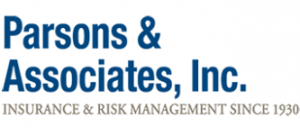Flood insurance is changing
Flood insurance is changing
The Federal Emergency Management Agency, which administers the National Flood Insurance Program, introduced a new methodology to determine flood insurance premiums (Risk Rating 2.0), that applies to flood policies—including commercial policies—purchased or renewed on or after April 1, 2022.
Previously, these premiums were determined based on flood maps. All areas can flood, and flood maps determined which ones were at higher risk of flooding. They showed an area’s flood zone, floodplain boundaries, and base flood elevation. Areas with a low- to moderate-risk of flooding were placed in Zones B, C, X or D; high-risks areas were placed in A or V. Typically, owners of a commercial property located in an A or V zone paid more in flood premiums. This methodology ignored the underlying value of the commercial property, as well as the individual flood risk.
According to the previous flood maps, there are more than 3,600 businesses that are in industrial areas within the high-risk flood zone in New York state. While the older flood maps present a good scope of the possibility of flooding and still will be used by lenders to require coverage, the new pricing model utilizes existing mapping data, NFIP policy and claims data, as well as data sourced from other government entities to better ensure that businesses pay their fair share of flood insurance premium. In addition, structural and replacement cost data and catastrophe flood models developed by third parties are incorporated into an assessment. The methodology includes variables such as: flood types, proximity from a flooding source, frequency of flood, elevation, and the cost to rebuild a property.
While the methodology has changed, the coverage has not. Businesses still are eligible for up to $500,000 in coverage for the building and $500,000 for building contents. The two coverages are purchased separately with separate deductibles. Building property coverage covers damage to the building and its systems (e.g., damage to the walls, floors, electrical systems; and heating, ventilation, and air conditioning systems). Contents coverage protects everything inside the building (e.g., furniture, inventory, machinery or equipment).









Leave a Reply
Want to join the discussion?Feel free to contribute!